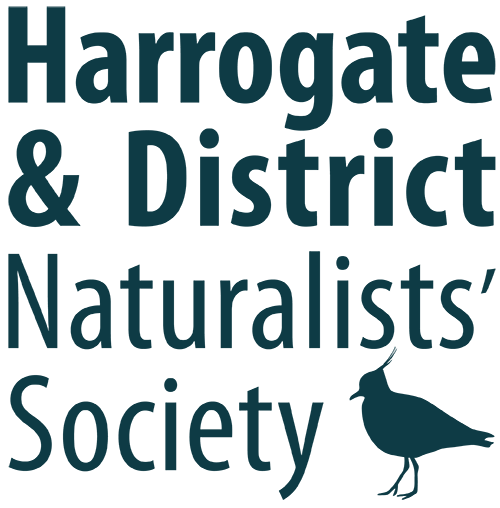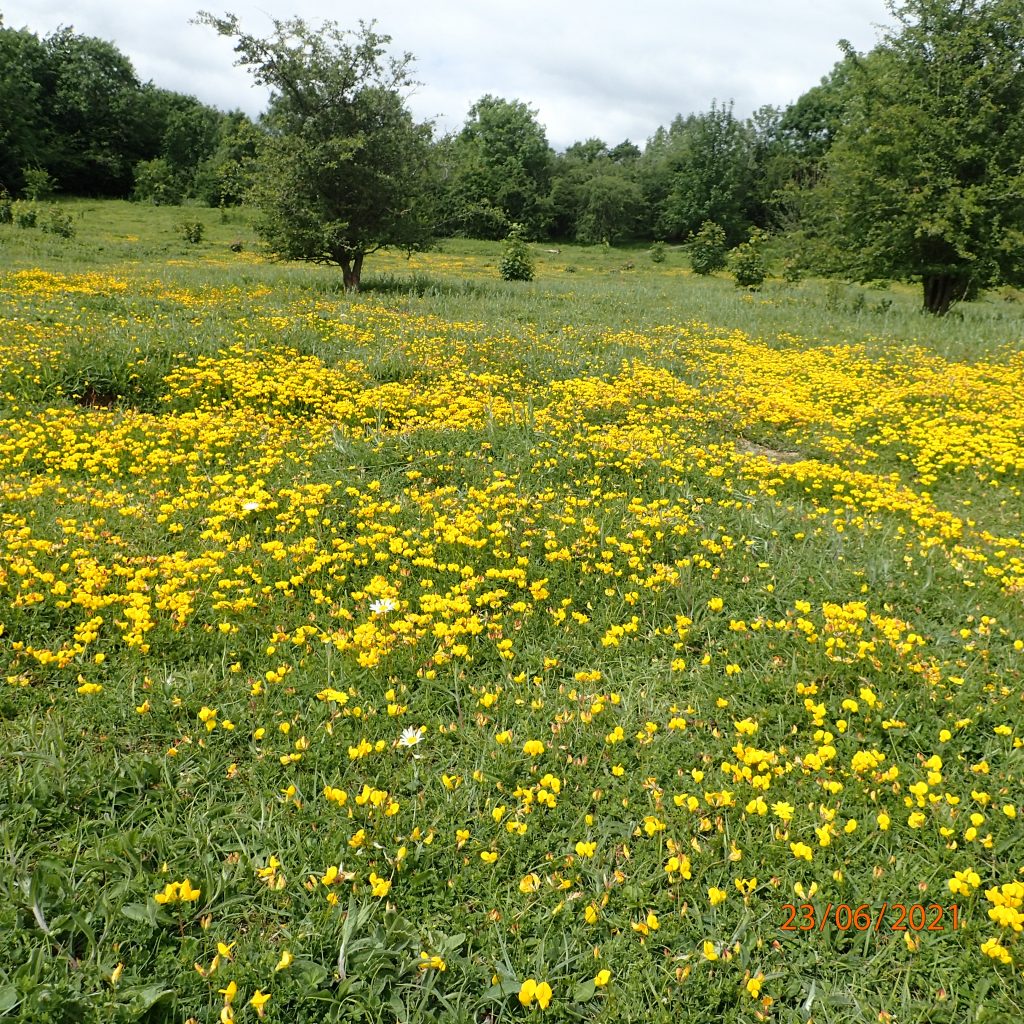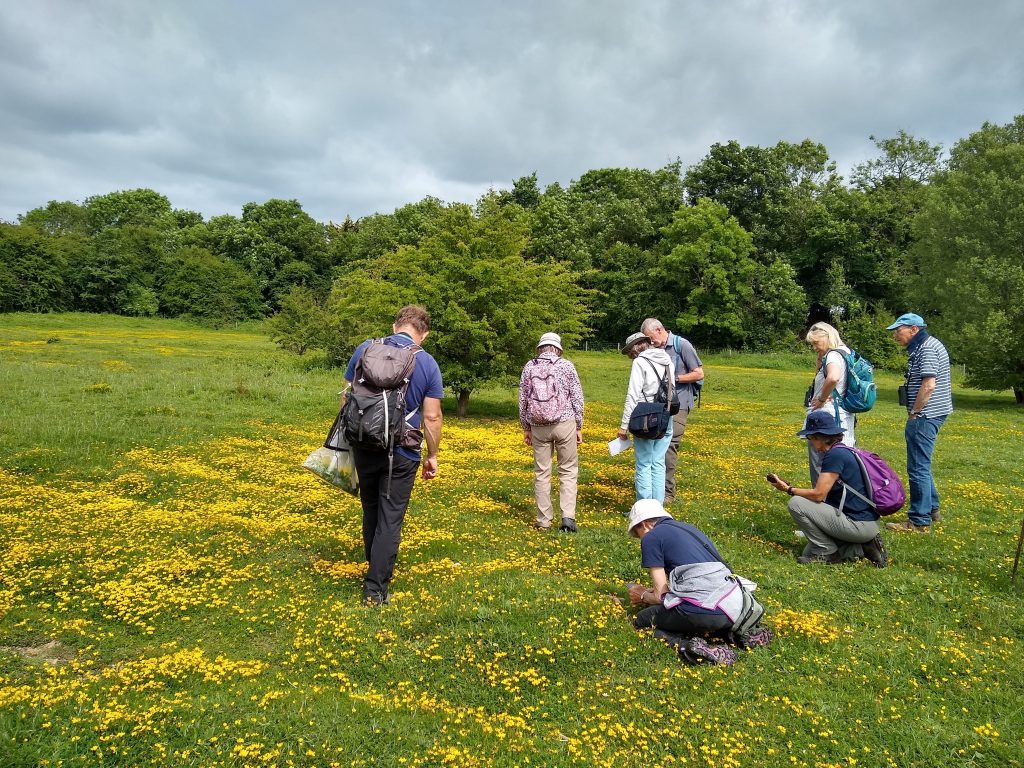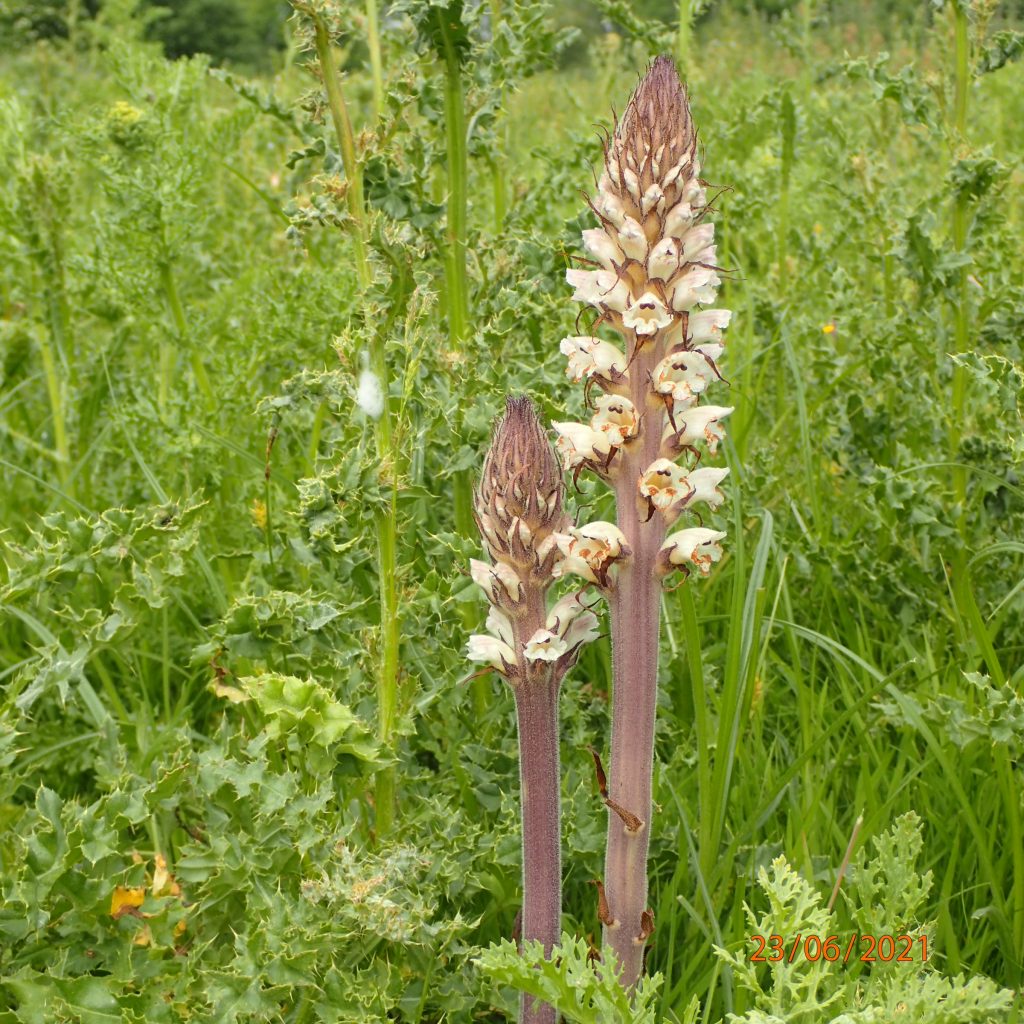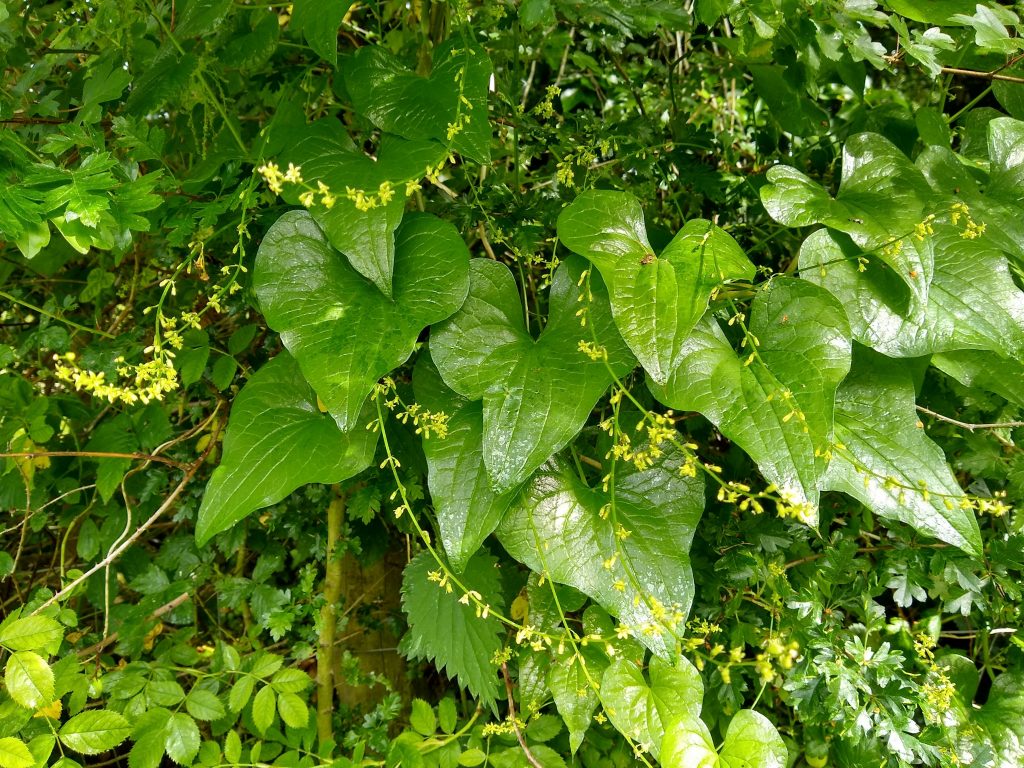On a warm, sunny afternoon a dozen HDNS members set off to explore Quarry Moor Nature Reserve at Ripon. This visit was certainly proof that we do not need to travel far from home to find special places. The site contains grassland, scrub, woodland and Permian magnesian limestone rocks which are seen nowhere else in Britain. It was designated an area of Special Scientific Interest (SSSI) in 1986.
Many of the plants only survive there because the grassland has not been improved for agriculture. Instead, it is conserved by hay cutting and grazing, and without this treatment the area would soon turn to scrub and eventually woodland and the unique diversity of wildlife would be lost.
Kerry Morrison and David Holmes very kindly provided us with some information about the geology of the area. It was then easier to understand about some of the flora growing there. Those of us who were new to the site were genuinely astonished to find such an immense diversity of species. The yellow carpets of the Birdsfoot Trefoil and Creeping Cinquefoil, the bright blues of the Speedwells and Ground Ivy, the creamy flowers of the Elder trees, and in contrast, the luscious green of the Black Bryony leaves which we found trailing down as if in a tropical rain forest. When you are in fields surrounded by such a huge array of plants of every shape, colour and form, then the entire area seems to come alive.
The most important plant to mention was the parasitic Thistle Broomrape, Orobanche reticulata whose host is normally the Creeping Thistle. The flowers of Thistle Broomrape have dark spots and purple stigmas. The stems are yellow-purple. This is a rare and protected plant in the UK, growing only on a few grassland sites in Yorkshire and hence its alternative common name of Yorkshire Broomrape. Kevin Walker reminded us that the Thistle host for this very rare plant happens to be one of the UK’s commonest! Despite being intrigued by this, we were also happy to devote our time to other species such as the sedges which included Hairy, Spiked and Glaucous. Later on in the afternoon we came across Bee Orchids, which are always so exciting to find.
For such a sunny afternoon there were surprisingly few insects and birds around. Speckled Wood butterflies were flitting along the edges of the woodland areas. We found a chafer beetle, which led to a discussion about their grubs which feed on lawns, turning them (the lawns) into something resembling ploughed fields. Those living on the Aspin estate in Knaresborough may already know this to their cost. We also came across a bright red Robin’s Pincushion, which is the gall of the wasp Diplolepis rosae.
Somehow despite the botanists, the dog walkers and the various recreational activities, this vulnerable area seems to manage to sustain its plant diversity. So hopefully we will all be able to continue to enjoy this wonderful facility.
Thank you to Kerry for organising this event and for recceing the site and to Kevin for all his knowledge and expertise.
Sonia Starbuck
Quarry Moor meadow (Kerry Morrison) Group in Quarry Moor meadow (Sonia Starbuck) Thistle Broomrape (Orobanche reticulata) (Kerry Morrison) Black Bryony with inflorescences, Quarry Moor, 23/6/2021 (Sonia Starbuck)
